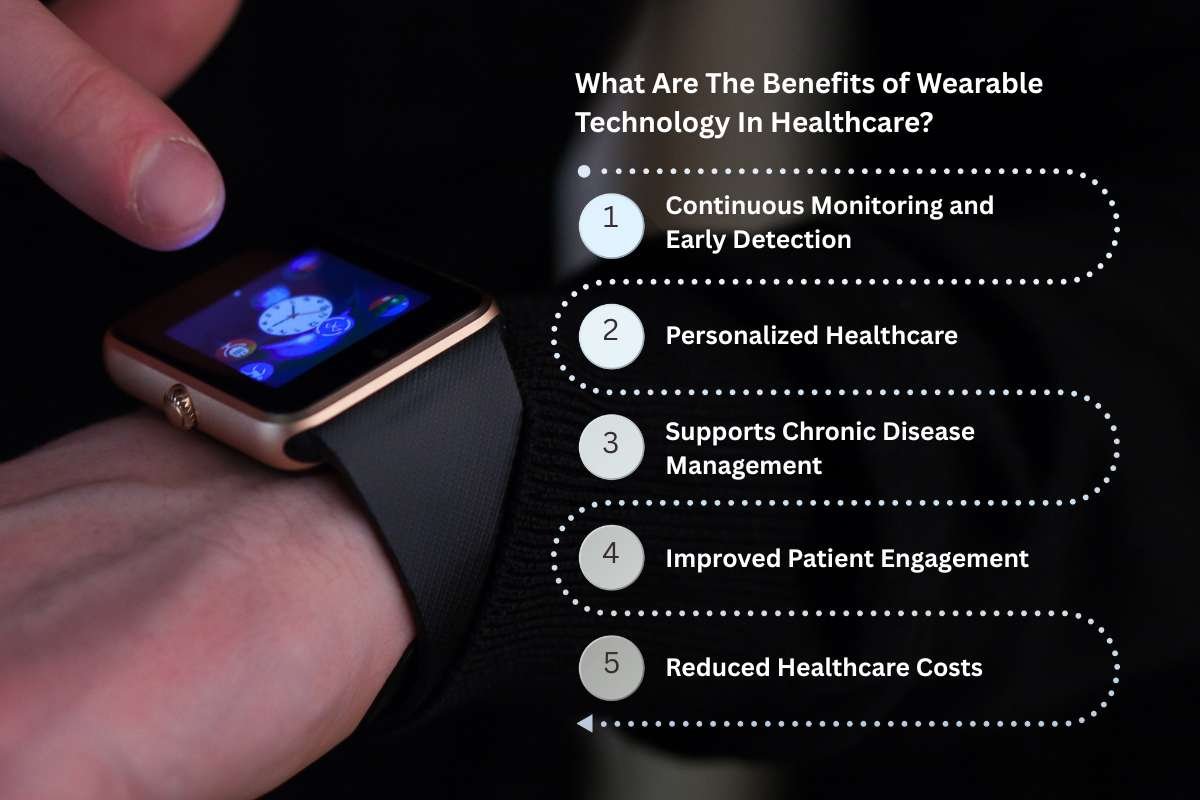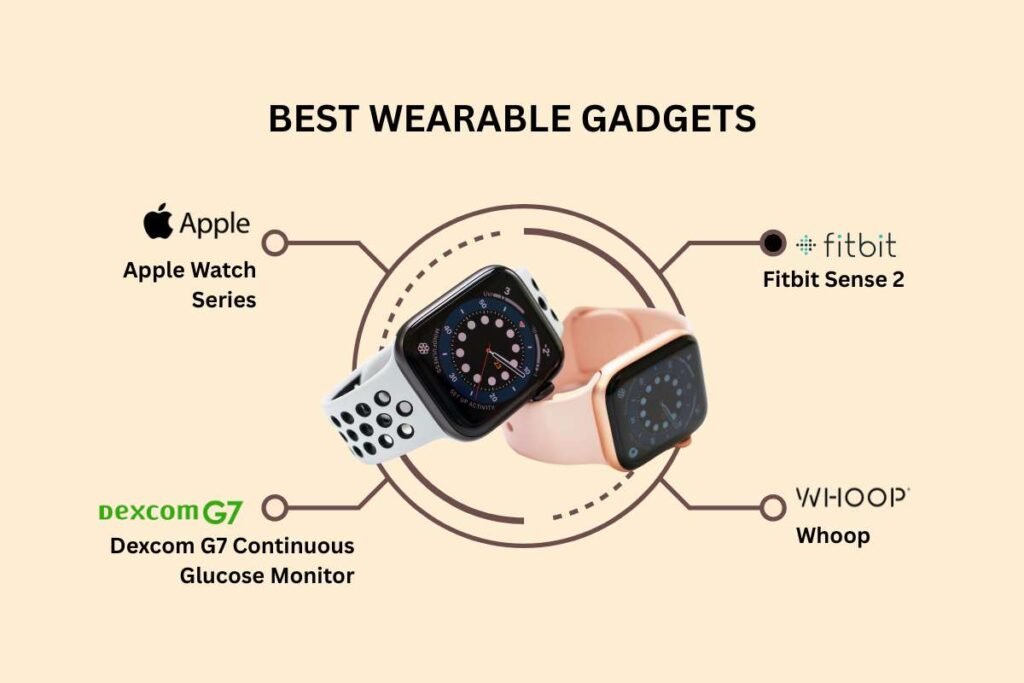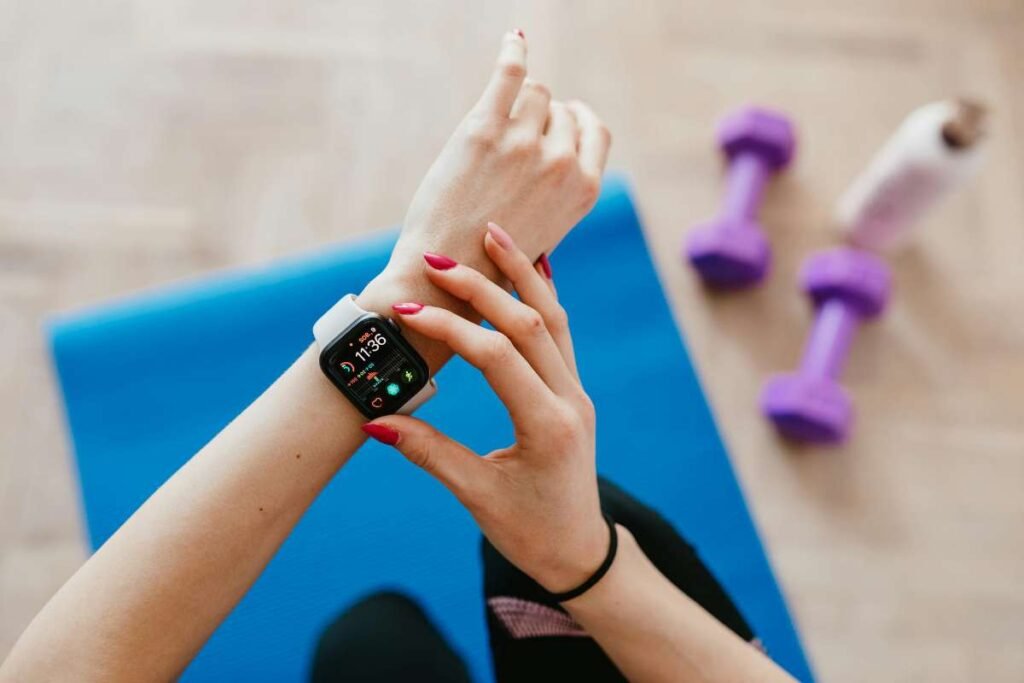It was a quick transition back when fitness trackers were used to count steps and monitor sleep. With the evolution of new wearable technology in healthcare, people can receive efficient care from the comfort of their homes. These wearable devices can now detect heart rhythms, monitor glucose and cholesterol levels, and even predict seizures. Such technological advancements have significantly improved healthcare outcomes for patients and providers.
Wearable devices are bridging the gap between consumer electronics and medical devices. Surely, fitness tracking is essential, but it’s not entirely about that. It’s to ensure preventive healthcare, continuous monitoring, and empowering individuals to take control of their health through data-driven devices offering personalized decisions.
However, everything comes with setbacks; similarly, specific challenges are associated with wearable technology in healthcare. Affordability and data accuracy are among those. Nevertheless, from a broader perspective, the benefits surpass the downsides.
What Is Wearable Technology In Healthcare?
Wearable technology refers to electronic devices worn on the body that monitor and even analyze various health metrics in real-time for clinical purposes. These devices collect and transmit data, such as heart rate, oxygen levels, sleep quality, and stress responses. Some wearables can be connected to medical apps, allowing healthcare professionals to monitor and provide adequate care.
They’re viable due to their ability to provide continuous data, while traditional methods give only a brief picture during a check-up. Such ongoing monitoring helps identify problems before they become serious, supporting healthcare providers and individuals in taking informed care.
How It Works ?
You must be familiar with these devices; for example, take Apple’s Fitbit. It’s popular for its ability to measure day-to-day activities. These wearable devices track your body’s basic signals like heart rate, oxygen levels in the blood, the number of steps you take, and even your sleep quality. So, how does it measure? Small sensors are placed on the devices, gathering information once they contact your skin. This collected data is sent wirelessly to your phone or a cloud system, and you can view it using an app.
These simplify your life by providing data on your body’s vital signs. You can set fitness goals, check trends, or share the info with your doctor. Another effective update in wearable devices is integrating artificial intelligence to monitor data. AI can effectively identify irregular patterns and alert us if something seems risky. Altogether, these devices give you a simple way to monitor your health from your wrist.
What Are The Benefits of Wearable Technology In Healthcare?

1. Continuous Monitoring and Early Detection
One of the benefits of wearable technology in healthcare is its potential for early disease detection and prevention. Wearable devices can easily identify subtle changes in heart rate, blood pressure, or oxygen levels that might go undetected through traditional methods. Advanced sensors in these devices continuously monitor your health and ensure timely intervention. These devices are like a vigilante guardian on your wrist, watching over potential health risks to protect you.
2. Personalized Healthcare
Wearable devices are becoming significant in the active emergence of personalized medicine. The data collected by the devices, including sleep quality, activity, and other physiological parameters, gives a clear picture of your overall health. Combining this data with your medical history and even genetic details offers doctors a better understanding of what your body needs explicitly. This combined data helps your healthcare provider devise accurate health plans, suggesting medications, lifestyle changes, and preventive steps to reduce risks before they escalate.
3. Supports Chronic Disease Management
Managing health is crucial, and most people take it lightly. Wearable technology in healthcare is like an extra hand that helps manage health risks. With the help of these advanced gadgets, you can easily overlook the possibility of long-term illnesses such as diabetes, heart disease, or even high blood pressure. Additionally, this data can help your doctor provide adequate care. You can dodge all the hassle of waiting for symptoms to worsen, occasional check-ups, and frequent hospital visits, improving your quality of life.
4. Improved Patient Engagement
Constant updates on your health will naturally make you more involved in managing it. You can easily measure the impact of your daily habits with wearable gadgets, as they track your movement and offer a scope for improvements. Looking at your health data motivates you to eat healthy, sleep better, exercise, and follow medical advice more closely. Over time, this active involvement will help you build healthier routines.
5. Reduced Healthcare Costs
One of the long-term benefits of wearable technology in healthcare is its potential to lower medical expenses. These advanced devices can significantly reduce the need for costly treatments or hospital visits by identifying health risks at an early stage and supporting preventive care. Yet another advantage is monitoring patients remotely, which saves time and resources for you and hospitals. Insurance companies are even beginning to cover some wearable devices, recognizing that they help reduce overall health risks and expenses.
What Are The Challenges of Wearable Technology In Healthcare?

Although wearable technology in healthcare is changing the efficiency of clinical outcomes, it comes with a small chain of setbacks.
Here are some of the common challenges:
1. Data Privacy Concerns
Health information is highly personal, and not all gadgets are built with strong security measures. Some apps collect more data than you realize. How and where this information is a serious concern. Sensitive details are vulnerable and could fall into the wrong hands.
2. Inconsistent Accuracy
Many wearable devices provide reliable data, but not all meet clinical standards. Readings might vary depending on how the device is worn or environmental factors. In some cases, inaccurate data could lead you or doctors to make the wrong decisions about treatment or care.
3. High Costs for Quality Devices
Affordability is yet another concern. Advanced wearable devices are often expensive, which many people cannot afford. This creates a gap in access, where only those who can afford the best tech benefit from accurate health monitoring.
4. User Drop-Off Over Time
While you may start enthusiastically, there is a scope for you to lose interest or stop using the device regularly. Reasons include discomfort, battery issues, or simply losing motivation. This inconsistency reduces the usefulness of the data and undermines the long-term benefits wearable technology can offer.
Best Wearable Gadgets

1. Apple Watch Series:
The Apple Watch Series monitors ECG, blood oxygen levels, and irregular heart rhythms. It even detects hard falls and can call emergency services if needed. Its iPhone integration makes it best for everyday users seeking medical insights with convenience.
2. Dexcom G7 Continuous Glucose Monitor:
This device attaches to the skin and continuously tracks blood sugar levels. People with diabetes can avoid finger pricks and receive instant alerts when glucose levels rise or fall.
3, Fitbit Sense 2:
Beyond fitness tracking, this smartwatch monitors heart rate variability, sleep patterns, and skin temperature. It also includes stress tracking and mindfulness tools. It’s a helpful choice for anyone looking to understand their body’s signals and manage day-to-day wellness actively.
4. Whoop:
The WHOOP Strap is an AI-powered wearable for athletes and fitness lovers. It tracks heart rate, sleep, and activity around the clock to help users understand how their body is performing and recovering. With the new WHOOP Coach feature, powered by GPT-4, users get personalized advice based on their data.
Conclusion
Wearable technology in healthcare is creating a future filled with empowered patients, effective health management, and personalized medicine. Wearable devices help identify illnesses before they become serious and support healthcare professionals in offering effective clinical care. However, there are some limitations associated with the technology. It is essential to address the concern regarding data security and accessibility.









